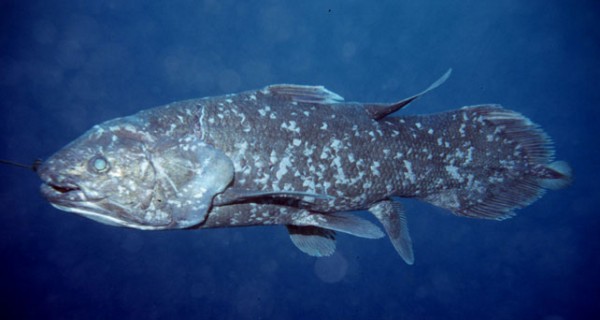By Ana Verayo, | March 10, 2017

Second Indonesian coelacanth known to science, later to become holotype of new species, Latimeria menadoensis. Also a suggested ancestor of tetrapods. (Mark V. Erdmann/Smithsonian Institution)
A new study has revealed that pre-historic fish developed limbs to explore the land, due to their improving vision. This occurred some 385 million years ago, according to researchers who studied fossilized evidence of underwater creatures. These creatures apparently saw prey on land and evolved limbs to go and capture them.
Like Us on Facebook
Teams from Northwestern University in Illinois, as well as Claremont McKenna Scripps and Pitzer Colleges in California, studied 59 specimens that went through these transitions - specifically during their transformation and after the creatures have evolved. According to biomedical engineer Malcolm A. MacIver of Northwestern's McCormick School of Engineering, because of vision, we evolved limbs to come onto land 385 million years ago. Prior to this, invertebrates had been on land some 50 million years before vertebrate ancestors.
Maclver explains that vertebrates possessed improving visual capabilities that helped them transition from water to land. Researchers suggest that the rich variety of food on land (such as centipedes, millipedes and spiders and many more) was very appealing to these animals prompting evolution to replace their fins with limbs.
Researchers say that fish can see more clearly in the air than water, 70 times farther than underwater. This is the reason why their eyes evolved to be three times as large, and their vision has increased a million times better.
According to biologist Lars Schmitz from the W.M. Keck Science Department under the Claremont McKenna, Scripps and Pitzer Colleges, larger eyes are worthless underwater since vision is only limited to what is directly in front of the animal.
The team conducted computer simulations of the creatures' habitats and environments such as clear and murky water in above water, daytime and night time conditions. Their results revealed that increased eye size is more beneficial in the air than water.
Scientists then studied the fossilized heads and eye sockets of the animals and discovered that the evolution of their transition from water to land involved a significant increase of eyes. More specifically, from 13 millimeters, their eyes have grown to 36 millimeters.
Maclever added that this eye orbit size became triple in size and it took them 12 million years. This is also the timescale of vertebrate evolution. Apart from this, eyes shifted from the sides of the head to the top, that allowed them to plan ahead and not just react to prey.
This new study was published in the journal Proceedings of the National Academy of Sciences.
-
Use of Coronavirus Pandemic Drones Raises Privacy Concerns: Drones Spread Fear, Local Officials Say

-
Coronavirus Hampers The Delivery Of Lockheed Martin F-35 Stealth Fighters For 2020

-
Instagram Speeds Up Plans to Add Account Memorialization Feature Due to COVID-19 Deaths

-
NASA: Perseverance Plans to Bring 'Mars Rock' to Earth in 2031

-
600 Dead And 3,000 In The Hospital as Iranians Believed Drinking High-Concentrations of Alcohol Can Cure The Coronavirus

-
600 Dead And 3,000 In The Hospital as Iranians Believed Drinking High-Concentrations of Alcohol Can Cure The Coronavirus

-
COVID-19: Doctors, Nurses Use Virtual Reality to Learn New Skills in Treating Coronavirus Patients







